#same for fish or shellfish
Explore tagged Tumblr posts
Text
Hehe I fucked up. Again. My mom's been buying me a lot of vegan and plant based snacks lately and she was trying a new protein bar & offered me a bite and because of the vegan snacks I didn't really think twice about it until after I took a (thankfully itty bitty) bite when she mentioned another flavor that IS vegan when I finally checked the ingredient list and saw two things I'm allergic to within the first like five ingredients. Now I'm kind of freaking out and waiting for the other shoe to drop. Hopefully it won't be too bad because I think I have freckles bigger than the bite I took, I've eaten other stuff (and plan to continue eating today, I have soup in the slow cooker) and I took two antihistamines which hopefully helps mitigate some of the find out that's going to be happening later. This could be nothing more than some phlegm or this could be me puking blood again. I'm hoping for the former. Mentally prepping for the latter. Pray for me.
#personal#blood tw#sort of#this is one of the worst parts anout my food allergies#you basically have to have a degree in nutrition and food science just so you dont poison yourself#i camt even give my mom a list of stuff to look out for#because the food companies try to make the ingredient list as confusing as possible#like i wish there were symbols that say what stuff is in the thing#like one for plant based#one for pork and pork byproducts#another one for beef or other meats#same for fish or shellfish#that way you can see at a glance if its safe or not#im sick of constantly risking getting sick because someone couldnt understand scientific ingredient names
1 note
·
View note
Note
What do u have against sea food? 🤨

It tastes to alive to me
The only real "seafood" i actually like is canned tuna tostadas, imitation crab, and takoyaki. FUCK i love takoyaki best thing humans every invented 10/10 can barely taste the octopus
Other than that i have no problems with it but if i get served any kind of seafood i will not eat it and if I accidentally take a bite of something with seafood in it you will see me convulse in agony and tear up from the taste
Yes, if I ever even have something with a slight flavor of seafood or anything from a river or ocean, I will have a violent physical reaction to it
It feels like it's going to jump out from my mouth at any moment
All fish kind want revenge against us all for eating it's kind, best be known I won't be caught lacking when they come.
#seafood haters words#same with seaweed just ew yuck it gets stuck in my teeth and mouth just ugh#clams and shellfish too ew yuck bleh they taste like fishy sand#lobster too one time i was givin lobster mac and cheese and was asked if i was having an allergic reaction#i cringed every time i took a bite and cried 4 times untill i finished it#my ass was NOT about to waist mac and cheese just because of that damn lobster#other than that i am a fish lover i love fish#i watched nemo so much my sister memorized the entire script and would recite it to her friends and teachers#they would “watch” nemo during lunch
6 notes
·
View notes
Text
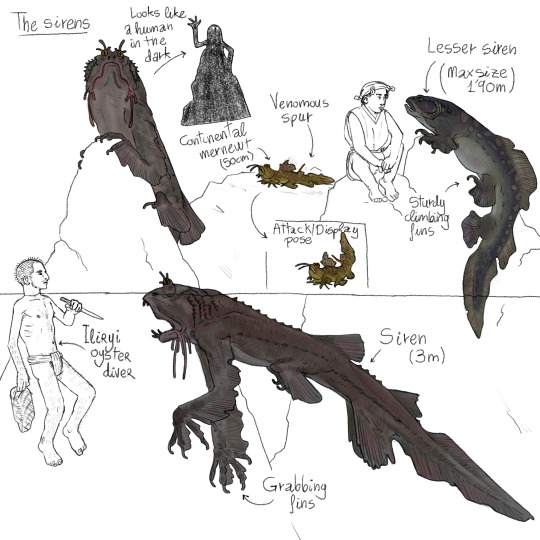
Sirens of Encounters in the Frontier.
In my setting, sirens are a kind of shark, descendants of a creature most similar to an epaulette shark, wich adapted to hunt fish and mollusks trapped during the low tide and eventually evolved to be fully lunged and mostly amphibian.
There are 3 species of sirens, all 6 limbed.
-The continental mernewt is native to the vast beaches and coral reefs of the southeastern coast of the continent. It's similar in bodyplan to a mudskipper and just as agile. They have jaws strong enough to open shellfish and don a venomous spur next to their tail fin, wich can kill small animals and cause pain, swelling and even necrosis of the limbs in larger animals like humans.
Male mernewts are known to "fence" each other as they are very territorial during mating season. This fights envolve leaps into the air, stabbing with their spurs, biting and their characteristic shriek.
These animals are very important in the culture of the warrior caste in the Sun Empire and represent masculine violence and war, sometimes positively (they are kept in artificial ponds ocasionally) or as a critique in poetry of the futility of war, since the mernewts are vulnerable to birds of prey or other predators while exhausted after a fight.
-The lesser siren is the most terrestrial of all sirens. Its native to the eastern and southern coast of the continent, the north of alwaysummer and the Twisted Islands.
These creatures feed mostly on fish stranded during low tides but many hunt seabirds by staying still between rocks in the shore until the perfect ocasion to leap and catch its prey with their clawed pectoral fins. They usually drag their prey to the water and drown it there. They are very capable of climbing rocks and can be quite fast in short bursts of speed.
They can get quite large and pose a significant danger to some cattle and humans.
-Sirens are native to the Twisted Islands and are the most aquatic of the three, even though they can still return to the sea if they get stranded.
They spend most of the day in underwater caves and are actually quite good at hunting in the sea floor, as they use their long arm like pectoral fins to move rocks and expose mollusks and other small prey. Still, their prey of choice are terrestrial animals. Sirens are indeed quite intelligent animals, though far from sapient, as they resemble the intelect of a marine crocodile, wich manifests in very specialiced hunting tactics.
They have learned to attract land animals close enough to the water by leaving small pieces of fish in the shore as bait for seabirds or imitating animal cries for help to attract unsuspecting predators or worried members of the imitated species. When they get the chance, they rapidly extend their arm-like fins and drag the animal to the sea.
Some sirens have specialiced in hunting humans, specially those on boats, wich is a big problem given how common reed boats and low canoes are for transport in the twisted islands, often used to also transport cattle.
Sirens can easily climb on top of these boats or colaborate between many to topple a ship.
They don't hunt in organized groups, rather they all hunt individually but at the same time, if that makes sense, and later fight for the prey.
These human eating sirens have learn to stand on small islands or unlit shores ar night and waive their arm-like fins while screaming (they can imitate a great variety of sounds) to lure humans closer to them.
The Iliryi people (those native of the twisted islands) have developed many methods to sail safely, such as covering their boats with down facing spikes, tying themselves to the boat or just carrying harpoons and being ready for action. Still, these tactics are not very efective when overwhelmed by a large group of sirens.
The government of the twisted islands hires whalers and fishermen from all across the eastern sea during their low season to work as sirens hunters, wich escort other ships and keep the siren population at bay. This is a high risk high reward job for these fishermen.
#fantasy worldbuilding#spec evo#worldbuilding#creature design#fantasy art#spec bio#art#concept art#fantasy#siren#mermaid#merman#mermen#enconters in the Frontier#my art#my artwork#original species#original art#twisted islands
2K notes
·
View notes
Text
I don’t know what came over me but there is something about retired John Price and his big hands and him getting softer around the edges after all the battles that makes me feral
Continuation of this I wrote a little while back.
John’s hands are scarred calloused things — hardened from years of battle and manual labour, spent in more ways then one, joints aching every time the rain clouds are coming to hover over the village.
John feels the upcoming storms better than any sailor does, knows how soon the waves would roar and clash with each other by the way his left wrist throbs with dull uncomfortable ache, sharp pain lacing towards his fingers when he moves it.
You watch him carefully, always in the corner of his own vision — pretty little thing, eyes too big and teeth too sharp.
You with your rows upon rows of glistening pearls, shining in the morning sun like you just got out of the water, toothy smile as a greeting to John smoking a pipe on his porch.
The sea breeze is always salty and that the only explanation he has for why his mouth starts salivating at the sight of the wet fabric of your shirt clinging to your skin. John sits on the steps of his cabin and rasps out “morning, luv”.
Voice too low to be appropriate, eyes glued to you without the hint of shyness in them. John is an old man, love, he’s seen too much, he’s lived a life.
He’s not going to be ashamed that he appreciates the view of a gorgeous thing like yourself in wet shirt.
You just smile at him, a little wider than maybe necessary but god, does he look delicious. Long legs and strong hips, arms big from a lifetime worth of battles, chest broad with curls of hair peeking through the unlaced cut of his shirt.
He looks good enough to eat.
Your tongue traces the sharp edges of your teeth, eyes roaming him with the same shameless interest.
Well, maybe you should?
John watches you go about your day, meets you at the small shop you hold at the edge of the village — selling freshest fish, small jars of roe and crates filled with water and shellfish.
John watches you, dexterous fingers uncannily good at deboning the fish, your smile widening when you catch John watching — blood and scales clinging to your skin.
John visits you few times a week, chats you up, eyes heavy with satisfaction when you silently laugh at one of his jokes — shoulders shaking, face flushed with laughter.
You bring him your best fish and scallops, show how to properly salt and store the thing. You get him ready for winter, touches lingering here and there, feeding him with seafood.
John is not one to ever say no to someone this beautiful taking liking to him, but still it feels a little new to be on the other end of care. To have someone hop onto his doorstep with herbs and seafood, with ointments for his joints and salted fish.
With smiles and sea salt in small jars.
Smoked and blended with herbs, colourful and coarse.
John takes everything, eyes softening when he sees it’s you, hands carefully accepting your gifts, stealing away small touches of your cool fingers.
You smile wider when he does, clicking your tongue in satisfaction.
A well-fed mate is a happy mate, after all. And you are determined to keep him very very happy.
After all, better he gets some size on him before you sink your teeth in.
#call of duty#cod mw2#girl.snippets#john price x y/n#captain john price x you#john price x you#captain john price x reader#john price x reader#captain john price#price x reader#john price#captain price#price cod
623 notes
·
View notes
Note
With tube plants, I’m really curious if any are edible, and if so what’re they like, and how avian culture sees them. While Taxonomically they’re animals, does avian culture consider them plants? For a random example, let’s say the avians, like us, had a religious period where they can’t eat meat. Would worm plants be considered off limits, or the same as anything else? Not saying that religion or whatever exists, it’s just the first frame of reference I could think of. Another example might be how fungi are considered vegetables, but are an entirely different kingdom.
As for eating, I’m curious if they have a more meat-like texture and taste, or a more plant-like one. I’m assuming the former. If they’re eaten, what are the parts that are eaten and how are they usually prepared? Do the avians have any traditions or culture regarding the tube, like we do with wishbone breaking or bone carving? Is it possible to farm them, and are they?
Avian cultures usually classify plantworms in the same group of food as shellfish, which they resemble the most nutritionally. They are more like a clam than a plant. Many are toxic as a defense against being eaten, but the ones avians can consume are usually cooked whole (in or out of shell) unless a specific body part is unpalatable (usually the gut or frond tentacles). For larger worms, they may be trimmed down to the tastiest part, the retractor muscle. It's very possible to farm them, and many are also cultivated for their beauty as landscaping plants. Their tubes are most commonly used to make plaster for building, or beads.
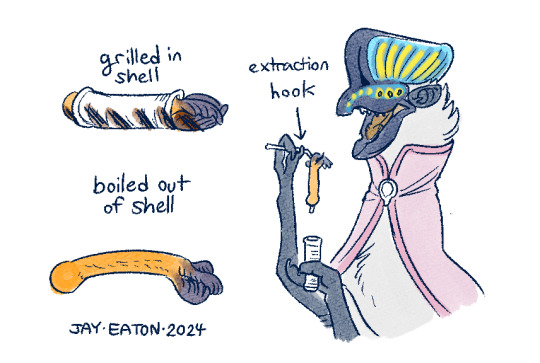
Vegetarianism is overall more rare in avian cultures than ours because they have a higher calorie-per-pound requirement than humans and many live on small islands where grain agriculture is more difficult to live off exclusively than fishing. There are several grades of culturally distinct pescetarian diets in modern avian cultures though, some of which view eating large "vertebrates" as unacceptable, land animals as unacceptable, vertebrates in general as unacceptable, only plantworms are acceptable, or hardline only plant matter and eggs (which may or may not include plant worm "leaves and flowers"... which can grow back). Hardline vegetarianism or veganism is more common among flightless avian cultures, who historically have had the most arable land.
751 notes
·
View notes
Text
Good News - June 8-14
Like these weekly compilations? Tip me at $Kaybarr1735! And if you tip me and give me a way to contact you, at the end of the month I'll send you a link to all of the articles I found but didn't use each week!
1. Rare foal born on estate for first time in 100 years

“The Food Museum at Abbot's Hall in Stowmarket, Suffolk, is home to a small number of Suffolk Punch horses - a breed considered critically endangered by the Rare Breeds Survival Trust. A female foal was born on Saturday and has been named Abbots Juno to honour the last horse born at the museum in 1924. [...] Juno is just one of 12 fillies born so far this year in the country and she could potentially help produce more of the breed in the future.”
2. The cement that could turn your house into a giant battery

“[Scientists] at Massachusetts Institute of Technology (MIT) have found a way of creating an energy storage device known as a supercapacitor from three basic, cheap materials – water, cement and a soot-like substance called carbon black. [... Supercapacitators] can charge much more quickly than a lithium ion battery and don't suffer from the same levels of degradation in performance. [... Future applications of this concrete might include] roads that store solar energy and then release it to recharge electric cars wirelessly as they drive along a road [... and] energy-storing foundations of houses.”
3. New road lights, fewer dead insects—insect-friendly lighting successfully tested

“Tailored and shielded road lights make the light source almost invisible outside the illuminated area and significantly reduces the lethal attraction for flying insects in different environments. [...] The new LED luminaires deliver more focused light, reduce spill light, and are shielded above and to the side to minimize light pollution. [... In contrast,] dimming the conventional lights by a factor of 5 had no significant effect on insect attraction.”
4. When LGBTQ health is at stake, patient navigators are ready to help

“[S]ome health care systems have begun to offer guides, or navigators, to get people the help they need. [... W]hether they're just looking for a new doctor or taking the first step toward getting gender-affirming care, "a lot of our patients really benefit from having someone like me who is there to make sure that they are getting connected with a person who is immediately going to provide a safe environment for them." [... A navigator] also connects people with LGBTQ community organizations, social groups and peer support groups.”
5. Tech company to help tackle invasive plant species

“Himalayan balsam has very sugary nectar which tempts bees and other pollinators away from native plants, thereby preventing them from producing seed. It outcompetes native plant species for resources such as sunlight, space and nutrients. [...] The volunteer scheme is open to all GWT WilderGlos users who have a smartphone and can download the Crowdorsa app, where they can then earn up to 25p per square meter of Balsam removed.”
6. [Fish & Wildlife] Service Provides Over $14 Million to Benefit Local Communities, Clean Waterways and Recreational Boaters
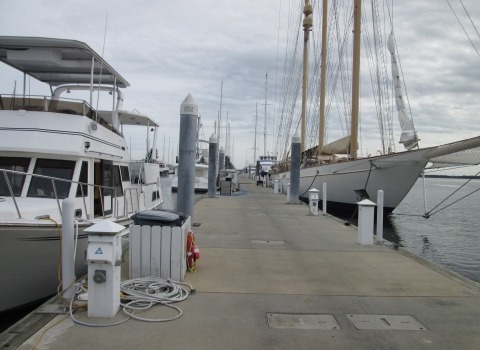
“The U.S. Fish and Wildlife Service is distributing more than $14 million in Clean Vessel Act grants to improve water quality and increase opportunities for fishing, shellfish harvests and safe swimming in the nation’s waterways. By helping recreational boaters properly dispose of sewage, this year’s grants will improve conditions for local communities, wildlife and recreational boaters in 18 states and Guam.”
7. Bornean clouded leopard family filmed in wild for first time ever

“Camera traps in Tanjung Puting National Park in Indonesian Borneo have captured a Bornean clouded leopard mother and her two cubs wandering through a forest. It's the first time a family of these endangered leopards has been caught on camera in the wild, according [to] staff from the Orangutan Foundation who placed camera traps throughout the forest to learn more about the elusive species.”
8. Toy library helps parents save money 'and the planet'

“Started in 2015 by Annie Berry, South Bristol's toy library aims to reduce waste and allow more children access to more - and sometimes expensive - toys. [...] Ms Berry partnered with the St Philips recycling centre on a pilot project to rescue items back from landfill, bringing more toys into the library. [...] [P]eople use it to support the environment, take out toys that they might not have the space for at home or be able to afford, and allow children to pick non-gender specific toys.”
9. Chicago Receives $3M Grant to Inventory Its Trees and Create Plan to Manage City’s Urban Forest

“The Chicago Park District received a $1.48 million grant [“made available through the federal Inflation Reduction Act”] to complete a 100% inventory of its estimated 250,000 trees, develop an urban forestry management plan and plant 200 trees in disadvantaged areas with the highest need. As with the city, development of the management plan is expected to involve significant community input.”
10. Strong Public Support for Indigenous Co-Stewardship Plan for Bears Ears National Monument

“[The NFW has a] plan to collaboratively steward Bears Ears National Monument to safeguard wildlife, protect cultural resources, and better manage outdoor recreation. The plan was the result of a two-year collaboration among the five Tribes of the Bears Ears Inter-Tribal Coalition and upholds Tribal sovereignty, incorporates Traditional Ecological Knowledge, and responsibly manages the monument for hunting, fishing, and other outdoor recreation while ensuring the continued health of the ecosystem.”
June 1-7 news here | (all credit for images and written material can be found at the source linked; I don’t claim credit for anything but curating.)
#hopepunk#good news#nature#horse#rare breed#energy storage#clean energy#biodiversity#street lights#lgbtq#health#native plants#invasive species#incentive#fws#water#fishing#swimming#clouded leopard#indonesia#library#kids toys#interdependence#bristol#uk#funding#native#outdoor recreation#animals#wildlife
752 notes
·
View notes
Text
Writing Reference: Soup
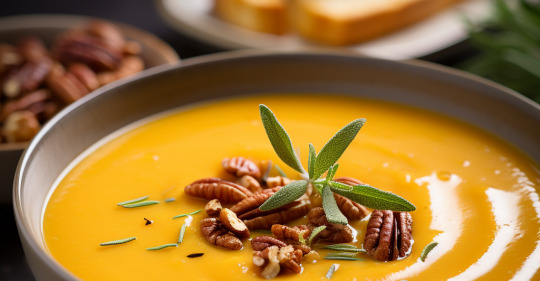
Soup, stew, broth, bisque, or chowder?
Generally speaking, a dish is called soup when it’s primarily liquid-based.
Stews are thicker and chunkier.
But an especially thick and chunky soup could be called a stew.
Broth is a liquid that serves as a main ingredient for many soups, and can be considered a soup when eaten by itself.
Bisque and chowder are different types of soup.
Soup vs. Stew
The main characteristic of the dish we call soup is that it’s primarily liquid-based. Regardless of what other ingredients it has in it (meat, fish, vegetables, whatever), they’re either submerged (or mostly submerged) in the liquid or are blended as part of it.
The first example constitutes what’s often called a brothy soup.
The second example is what we’d usually call a creamy soup (creamy as in texture—it may or may not have cream in it).
But there are a lot of variations.
The dish we call stew may start the same way as a soup, and can include many of the same ingredients used in soup (meat, fish, vegetables, whatever).
Stews are cooked by simmering or slow boiling, known as stewing.
The popular distinction between these two foods is how “liquidy” or how thick they are: a dish called soup typically has more liquid in it than a stew does. Stews are generally thicker than soups, being made up primarily of larger, solid chunks of ingredients.
In other words, stews are thicker and chunkier—and always have solid ingredients.
Generally speaking, if there is so much liquid that the ingredients are fully submerged, it’s a soup. If the chunks dominate the dish, it’s a stew.
Of course, a dish labeled as soup can be pretty thick and chunky.
And, sometimes, cooking adjustments can turn one into another. A soup could become a stew if cooked long enough that most of the liquid boils off or is absorbed by the ingredients. Or you could add more liquid to a stew to make it soupier. The point at which a soup becomes a stew (or vice versa) can be endlessly debated.
That’s because there is no exact measurement or technical rule separating the two. In many cases, both words could be reasonably applied to the same dish. The difference is often simply a matter of preference or opinion.
Broth vs. Soup
The essential ingredient in many soups is broth (or stock).
Broth is traditionally made by boiling or simmering water with ingredients that will give it flavor, such as meat, fish, or vegetables (and often a combination of things).
The primary flavor of a broth is often specified: chicken broth, beef broth, vegetable broth, etc.
For example, chicken noodle soup is traditionally made with chicken and noodles in a chicken broth.
But can broth be considered soup by itself?
Yes, in fact, when broth is eaten—even without any added ingredients—it is typically considered soup.
For example, a type of clear soup known as a consommé can be considered a broth if it is used as a base for the addition of other ingredients but a soup if it is eaten by itself.
Bisque vs. Soup
A bisque is a type of thick soup that uses cream as a main ingredient.
The term bisque is typically applied to soups that have some kind of shellfish or vegetable as the key ingredient.
Classic examples of bisques include lobster bisque, shrimp bisque, crab bisque, tomato bisque, and potato bisque.
While most people agree that bisque is a type of soup, some may distinguish creamy bisques from non-creamy soups in the same way that others distinguish liquid-forward soups from chunky stews.
Chowder vs. Soup
Chowder is a type of thick soup whose most traditional and well-known forms contain clams, fish, or other seafood, often in a creamy, milk-based broth and also featuring potatoes, onions, tomatoes, or other vegetables.
Different types of clam chowder are especially popular in the Northeast region of the US. Other examples of chowder include fish chowder, corn chowder, and potato chowder.
Most chowders are usually considered a type of soup, but their creamy thickness can also result in them being labeled as a stew.
Some people may take the hairsplitting even further and argue that chowder is its own unique thing in the same way that people distinguish soups from stews.
Source ⚜ More: Notes & References ⚜ Writing Resources PDFs
#soup#food#writing reference#writeblr#literature#writers on tumblr#spilled ink#dark academia#writing prompt#creative writing#light academia#writing inspiration#writing ideas#writing resources#soup for u dear anon
142 notes
·
View notes
Text
That Awoooo Inside You, Pt. 2
Fandom: The Wild Robot / Fink the Fox
Pairing: Fink <3s OFC fox Farrah
Rating: G all the way, don’t worry. This is keeping in the world and disgustingly wholesome. Prolly too clean for tumbles 😆
Warnings: None. It’s for cuteness and for heart.
Summary: After the events of The Wild Robot, a new resident joins the island. She’s a little withdrawn and Fink finds out why.
A/N: This chapter is mainly for @brandylyn because it means so much to me that she wants to read a simple story about a little yearning fox.
PART 1
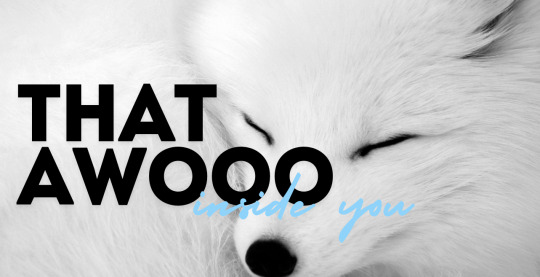
For the past many mornings Fink had woken to an empty hut, the little heap of leaves near the door where Farrah preferred to sleep flattened and empty. As much as he knew he could just track her by scent, it wasn’t necessary anymore. He knew where she was.
And his heart sank a little.
He’d been hoping for the day when he’d wake to find her still sleeping, at peace, or the night where she’d fall asleep before him, comfortable in her new home. But her ears always remained alert, feigning sleep into the night, and she was gone by first light.
Not that she wouldn’t come back to join him for meals or to play fast-as-the-wind with the possum kids. But he supposed she went to the cove in the morning for the same reason she slept near the door.
Hoping to catch a whiff of home.
There’d been two full moons since Farrah came to the island and she adjusted fast to their strange way of life. She wasn’t as hard driven by hunger as some of the other animals and gained from their talks that was because food had been more scarce where she was from and she was patient when it came to waiting for meals. Fish and shellfish had already been a big part of her diet.
So she must have come from another island…but Fink couldn’t be sure. Anytime he’d ask more about it, she’d change the subject or go quiet. And she was very very good at being quiet. Probably had to learn that with fur like hers. It’s a wonder she made it to maturity without proper camouflage. Silence and speed would be her only options.
Except when she laughed. She laughed loud and high, almost a cry when she was really going. Farrah was easy to amuse and he made sure to do so whenever he had the chance. He wanted to see her happy and settled here. With him.
And he just liked to hear her laugh. Nobody laughed at his jokes like she did.
“That is the look of a lovelorn fox,” Paddler dryly declared one day, turning away to scrape away at a massive trunk with his crooked incisors. Fink had just cracked a joke at a squirrel’s expense–and not a clever one either, something about the size of nuts–and Farrah had laughed before bounding off after a butterfly. The beaver’s remark made Fink realize that he was wearing a dopey grin and he shook it off, but not before Paddler added, “Be direct. Build her a dam to show how you feel.”
“I’m not going to give her a dam.”
“But I’m telling you, fine fellow. We may be swimming among the trees as a pike in the waters of the river, yet the ladies still love a good bit of worked wood. You have that home–a good design, said because, as you will remember it is mine–but a little riverside palace of her own? Eh? What a treat.”
Fink rolled his eyes, playing cavalier. “It’s not like that. We’re–” over in the near clearing, Farrah’s fur sparkled white in the sinking sun, her head tilting side to side as she watched two butterflies dancing, trying to pick up on their whispers, quiet and still….and beautiful. “--friends.”
“Ha!” Paddler choked on a laugh. “You fool no one, sir. Just give her a treasure and be done with it. I’m telling you a dam always does the job, but I suppose you must do as your ilk do.”
“Is that why there's no Mrs. Paddler?”
“Oh ho! I have had my salacious share of affairs, I assure you. My dams are well-given and wide spread. I am focusing on other projects at the moment,” he boasted with a grand gesture towards his gnarled tree, and turned back to his gnawing.
But Fink hadn’t let the beaver’s advice sift completely to the background and after a particularly good day of digging holes for grubs and laying in the sun-warmed grass, it was Farrah herself that completed the thought.
“Okay. You get to take one feature from any other animal and add it to your own. What are you stealing?” Fink rolled on his back, belly to the sun, black paws bent and hanging lazily.
“Uhhhhh,” she sighed. “Mayyyyybe racoon paws?”
He wrinkled his nose in disgust. “Ugh. Really? You’d lose your ability to run fast.”
“Yeah, but where am I gonna run here?” she smiled, teasing, and his tail twitched hopefully. “And I bet they’re useful for arranging bedding and…holding fish…and…oh! I bet urchins would be so much easier to crack open, no more getting spines in my jowls…”
“Wait!” He flipped to his stomach then, his claws digging in the dirt, eager to run, eager to share the idea that had just come to him, ready to bound and yip but controlling himself–she was skittish if he was too bouncy–”You like urchins??”
“Of course. Do they live here? I’ve never found any.”
“Come on. I gotta show you something,” and he took off running with the breeze at his back, which carried the information that she was following and keeping up with him as he made his way through the trees and down the sloping landscape to the shore.
Running straight for the goose flats, he turned abruptly at the shoreline and went crashing though some bushes until they came to a bluff wall. But instead of coming to a halt, Fink took a leap, knowing which ledges were wide enough to hold him, and which led out to the sea. From there, he was able to round the corner to a small cove. With the tide out, it was a completely isolated beach, not even a sand bird or seagull.
“Welcome to the northern most point of the island,” he explained with a sweep of the paw. “When I don’t wanna dig clams to a soundtrack of honks, I come out here. The tide leaves little treats too. Cockles, a dead fish, sometimes an eel. Sometimes though–” he scanned the stretch of beach, his heart skipping at the sight of a dark little blob, “--there! Urchin!”
Dashing over, he sniffed at it and, finding it still fresh, held it down with one paw and expertly cracked its underside open with his teeth. Then he sat back high and proper, very proud of himself, and offered the feast to her with a flourish. “Madame.” Surely this would be it. This cove was his little secret, his treasure to give her. And serving up delicacies with humor? He just wanted to make her smile…
But Farrah had stopped nearby, distracted, her strange eyes–one light, one dark–searching the sea, her nose activated, taking in the air.
“Uh…Farrah?” Snapping to, she closed the distance, and Fink cocked his head. “Everything okay?”
“Oh, of course. I just caught a whiff of–” she fought off a glance to the sea. “It doesn’t matter. Oh wow! The urchins are huge here!”
“Yeah,” he chuckled nervously. “It’s a specialty here. You’re gonna love the recipe. This one’s for you. Dig in.” As she did, Fink turned fully toward the water and scanned the horizon, trying to see what had caught her attention but found no scents or sights out of the ordinary. “This place is a little secret of mine, but you’re welcome to it anytime.”
“It’s nice here. Quiet.” She licked her jowls, taking in the last morsels of the delicacy. He still hadn’t turned from the sea and just as he meant to ask what had pulled her attention, she surprised him by coming to sit beside him, not just near him, but right beside him, shoulder to shoulder, flank to flank. “Thank you.”
Success. He sat still, paralyzed, trying to keep his heartbeat from racing, his tail from twitching. She liked his gift, she liked his shared treasure, he could feel his paws wanting to happy tap in the sand and the springs of his hips wanting to leap in triumph.
But still he sat. Because she had finally come closer and he knew even a twitch would send her just out of reach again, no matter how badly he wanted to curl his tail around her–not only to warm her but to protect–his foxy instincts running high.
But still he kept sitting, as long as he could, watching her from the corner of his eye as she sniffed the wind and seemed to be relaxing around him.
Not long after that, she was gone in the mornings and he’d track her here to this cove and peek around the bluff wall to find her sitting in almost the same spot, looking out toward the sea. The first day he’d found her, he’d startled her and she ran off in a flash, not coming home until after dark.
After that he left her be and went back to the goose flats for breakfast. She’d join him soon enough and say nothing about it, smiling as if all was fine. But she never sat so close to him again and she still slept every night with perked ears near an escape route.
After a while though, he tried a different tactic. He came out into the cove and sat at the shore as she did–quiet and still–only still very far away. He’d let her pick up his scent before moving closer and sitting nearby, matching her gaze to the sea, and they would sit in silence for a short moment before she would perk up as if all was well and backtrack to the wall and therefore getting on with the day, nothing more about her alone time to be said.
Until today. Poking his head around the bluff he found Farrah on her feet, trotting up and down a short length of the shore, eyes on the far, far horizon…and then he noticed the smell.
Snow.
There was an iceberg far out to sea, not unusual for late spring on some years, but not altogether common either. They never came close and were often in and out of sight within a morning. This one was drifting further away and Fink watched as Farrah tracked it going, looked after it even when it was too far to be seen or smelled, finally sitting with a little sigh and sink of the head.
And then he understood.
One recent night they’d been looking up at the stars and Fink had pointed out The Great Crack in the Sky, his friend Roz had told him its name was Cassiopeia, whatever that means. That’s when she told him that in her home, they called that group of stars The Iceberg Edge. The elders of her pack used it to teach kits not to go out onto the ice when they saw the pattern of this constellation on the ground, because it meant the ice was breaking up and going out to sea.
This is how she came here, she told him, caught on a piece of spring ice that broke away during a clutch of warm days. It drifted too far out to sea for anyone to hear her howling. When it was almost melted out from under her, she was lucky enough to swim to a piece of debris and huddle on it for a few days until there was an upset and she was in the water again and the next thing she knew she was waking up in the hut with a bear blocking the exit.
It seemed like yesterday and ages ago all together.
Once she noticed him sitting down the beach, this time he moved closer and sat quietly for a little bit before speaking slow and low.
“You…miss your home, huh.” As he expected, she only blinked down at the sand, and his ears fell to a droop. But she wasn’t running off or changing the subject. Maybe if she wasn’t ready to talk, she might be okay with listening. Fink swallowed, realizing he was about to say some things out loud for the first time. “I felt the same way when I came to this part of the island. My mom kicked me out pretty early and I was run off before I could really learn the ropes. It took me a long time to forgive her. I know now that it wasn’t her first choice, that there were too many males and not enough females so I guess she was afraid I’d get targeted. But I was pretty darn lonely for a long time.”
“What changed?”
His breath caught as she spoke up, but he managed to recover and answer. “I found friends. Really amazing friends. I hope that for you too. It seems like you’re off to a good start. Especially if you keep giving Pinktail a break from her spawn.”
At least she cracked half a smile before letting it fade again. “Friends don’t replace family.”
“No, not replace. But they can become another kind of family. I have proof.” He’d told her enough about Roz and Brightbill, and Thorn spent enough time in the hut that he knew she understood. “But I’d like to hear about your family…” and here he couldn’t help himself, his self-interests creeping in as he tested his chances, “...I assume you mean your mate and kits…”
Here Farrah gave him a look so sudden, so bewildered and distressed that he was about to ask her if he’d overstepped, but instead, that laugh of hers broke out, although not as loudly as usual.
“I was talking about my mother and siblings. They were my whole world. They had to be. The food was scarce so the families were spread out and…well. Mate? That’s… I’m obviously nobody’s first choice, I mean, just look..” She stuck out her tongue and made a silly face, tilting her head from side to side.
Fink could only blink, perplexed.
The breeze picked up, but the scent of snow was only a memory now, the water a flat line. Farrah’s nose pointed down to the sand again, her half smile diminishing by half again for a moment. Fink leaned forward, words starting to bubble up, words he thought he’d never get to say to another fox. But before he could say what he’d been holding down, she shook off the mood and feebly tried to make it a non-issue, abolishing the silence between them.
“Have I ever told you how my sister once head-butted an elephant seal?”
“Ah…no. Really?”
“Really!”
“Huh. What’s…an elephant seal?”
“It’s–oh! Sometimes I forget…of course you wouldn’t know...!” Then that laugh again, launching into the story, starting with an impression of the seal–although if it was a good impression or not, he couldn’t tell having never seen one. But he knew somehow by her laughter that it was. She was suddenly back to normal, comfortable to be herself when it was only the two of them in this little hidden cove.
No mate. She had no mate. This was good news. For him. But sad for her. That is, if she wanted one. What if she didn’t–? Wait. What did she mean by that? That nobody would choose her? Because of her fur? Because she was a runt? Maybe that made sense in a place where she would have to hide from predators, but she wouldn’t have to do that here. And even if it was necessary, he could protect her…probably. If she wanted that... Even so, she’d be okay. If he learned anything from Brightbill it was that sometimes the will to survive past nature’s plan for you makes you even more likely to outlive everyone else.
He could certainly feel nature’s plan working on him and thought with a little grin that he would gladly give up a longer life for that plan to work out….
But Farrah was speaking, talking about her family, their annual rounds from point to point in their territory, how she and her sisters used to share everything and hide and pop out to scare their mother and she would do her very best to act frightened. And the nights dancing under the green light curtains! Had he ever seen the shifting lights in the night sky? He had to admit he hadn’t. So he put his wonderings aside and laid down in the sand, crossing his paws and listened, learned, and bathed in the light of her widening trust. They had all day until the tide came back in. And Fink had no need to be anywhere but here.
He hoped in time, she would feel the same.
___
PART 3
SERIES MASTERLIST
MAIN MASTERLIST
#the wild robot#the wild robot fanfic#fink the fox#wholesome#fluff#that awooo inside you#that awoooo inside you#fink x farrah
140 notes
·
View notes
Text
Ways I want to live more like an otter!
I'm not sure I consider myself to be transspecies, but these are some things I'd like to do to actually feel more like my theriotype in my day to day life and ease my species dysphoria. 🦦🐚
Physical Focused Amendments
Wear more brown fur every day, specifically vintage and recycled fur coats.
Get permanent fangs or at least custom ones I can put on and remove at will.
Start swimming again and get better at it, especially swimming in rivers and lakes. I plan on getting a membership to an indoor pool again eventually!
Vocalize like my type more often and be expressive in more animal-like ways.
Allow my body hair to grow out more and not feel as pressured to shave constantly for others.
Eat more shellfish, cephalopods, and eat vegan substitutes for finned fish dishes. Besides just that, eating a more whole foods diet in general.
Stop chewing and picking at my nails and allow them to grow out, eventually shaping them more like claws. Might just get acrylics honestly.
Find a way to get webbed finger gloves for everyday wear, maybe sewing fabric on brown gloves. Would also like to add paws to it.
Make and wear accessories with sea bird feathers, ethically sourced shells, and sea glass. While this is more humanistic, it would be more for humans around me to recognize as ocean items.
Get a proportionally accurate, realistic otter tail eventually.
Possibly get a tattoo of the paw "beans" on my hands and feet.
Get an earthy scented perfume to use as my "scent", otters are rather pungent!
Possibly (but optionally) get top surgery or a breast reduction to get closer to an animal chest size than a human chest size.
Train my 5 senses, specifically my smell, to be stronger and pick up a bit more in my environment.
Lifestyle Focused Amendments
Get a shellfishing license and catch my own food more.
Make my bedroom more like a waterside den, adding plants, maybe recycled glass floats and netting, grasses as houseplants, and so on! Would also use my humidifier more.
Refer to myself as an otter more regularly around others, even if casual or in a joking way to get them to associate me with them.
Spend more time at the rivers and the ocean.
Collect oceanic and river items more often in a sustainable way.
Clean up the waterways and plant native plants in the areas around them.
Provide money to water focused and animal conservation efforts.
Add an aquarium to my home, even if it's just a bowl of water plants.
Develop an artistic hobby so I can make ocean themed and otter focused pieces of art.
Use my phone and social media far less. I'd eventually like to only use social media for this community and finding recipes.
Get a kayak and start kayaking the rivers and lakes, then eventually the bays.
Consider getting into scuba diving, although this would be difficult in Oregon. Same with surfing.
Play ambience in my room to feel more at home.
Get a job working in conservation or at an aquarium or zoo, even if it's an office job. I've considered working in grants in the past.
Feel less shame and embarrassment about behaving like an animal, even in my own home. Being an adult has made this a bigger hardship for me personally.
Advocate against the trapping of wild otters and support efforts that improve their lives.
Things I Already Have
My hair is currently an otter shade of brown which I really like and don't want to change.
Moved to the PNW, which got me close to the coast and surrounded by far more rivers and a lot more rain.
Have gone snorkeling a couple of times, which was very euphoric!
My fiancé is aware of me being a therian and is entirely accepting of it, which I'm extremely happy about. I wouldn't marry someone who doesn't support an intrinsic part of me.
96 notes
·
View notes
Text
Round 3 - Reptilia - Pelecaniformes




(Sources - 1, 2, 3, 4)
Our last order of waterbirds are the Pelecaniformes, comprised of the families Threskiornithidae (“ibises” and “spoonbills”), Ardeidae (“herons”), Scopidae (“Hamerkop”), Balaenicipitidae (“Shoebill”), and Pelecanidae (“pelicans”).
Pelecaniformes are mainly semi-aquatic birds that hunt on or near water, though some have adapted to forage in grasslands. They have large bills, long necks, and many have long legs for wading. Most have a bare throat patch, and their nostrils have evolved into dysfunctional slits, forcing them to breathe through their mouths. They also have a pectinate (comb-like) nail on their longest toe, which is used to brush out and separate their feathers. They are carnivorous, feeding on fish, squid, invertebrates, and other aquatic animals, with a variety of beak adaptations. They are distributed worldwide, except in Antarctica.
Most pelecaniformes are colonial nesters, sometimes in colonies formed of multiple species, usually in trees or on the ground near or above water. Hamerkops (image 3) are known for their huge, unique nests with a tunnel inside, while Shoebills (gif below) build floating nests. Pelecaniformes form monogamous pairs, at least for one breeding season. Generally, the male will bring sticks or other nesting material while the female builds the nest. In many herons, the male will begin to build the nest before pairing up with a female, and then the two will continue building the nest together after courtship. Clutch size varies between species. Both parents incubate the eggs and feed the chicks via regurgitation.
The pelecaniform lineages appear to have originated around the end of the Cretaceous, appearing to belong to a clade of "higher waterbirds" which also includes groups such as penguins and Procellariiformes. They split into their modern groups by the Late Eocene, around 37.17 million years ago.

Propaganda under the cut:
The African Sacred Ibis (Threskiornis aethiopicus) is so named for its role in Ancient Egyptian religion, where it was linked to the god Thoth, considered his living incarnation on Earth. The species was commonly mummified, and the birds were given different burials according to their status: as pets, offerings, or holy individuals. By 1850, the species was locally extinct in Egypt, though it is common in Africa and Asia, and has been introduced to Europe.
The Australian White Ibis (Threskiornis molucca) is a relative of the Sacred Ibis that is native to Australia. Pushed out of its wetland habitat by human development, the bird eventually adapted to urban environments on the East Coast of Australia. The bird’s preferred diet is aquatic invertebrates like crayfish and mussels, which it obtains by digging with its long bill, however, a loss of wetland habitat has led to the Australian White Ibis adapting its diet to include human food waste, earning it the nickname “Bin Chicken”. These native birds have also been observed eating the invasive Cane Toads (Rhinella marina), flicking them to make them secrete their poisonous toxin and then washing them off in water, something many other native carnivores have not figured out.
The Scarlet Ibis (Eudocimus ruber) (image 4) is the only waterbird with primarily bright red coloration, which comes from Astaxanthin, a keto-carotenoid, derived from a diet of shrimp and other red shellfish. But unlike flamingos, Scarlet Ibises have a more varied diet, preferring scarabs and other ground beetles.
Likewise, the Roseate Spoonbill (Platalea ajaja) gets its pink coloration from the same carotenoid as flamingos: canthaxanthin. Like other spoonbills, its spoon-shaped bill allows it to sift through water for crustaceans, bits of plant material, aquatic insects, mollusks, frogs, newts, and very small fish (such as minnows), that would be ignored by larger waders.
The critically endangered São Tomé Ibis (Bostrychia bocagei) is the smallest Threskiornithid, at 45 cm (1.5 ft) long and weighing 450 g (1 lb). The São Tomé Ibis only lives on the island of São Tomé, with 19 other species of endemic birds, 10 of which are threatened with extinction. Threats include overhunting and habitat loss, especially of the trees the ibis uses to roost and nest in. While conservation efforts are becoming more prominent on São Tomé in recent years, including the establishment of a National Park, no conservation plan has been enacted specifically to protect the tiny ibis.
Like the smallest Threskiornithid, the largest Threskiornithid, the Giant Ibis (Pseudibis gigantea) is also critically endangered. Adults are 102–106 cm (3.3–3.5 ft) long and weigh about 4.2 kg (9.3 lb). It lives mainly in Northern Cambodia, with a few birds possibly surviving in Southern Laos and Vietnam. Its primary threat is habitat loss due to the drainage of wetlands for cultivation and clear-cutting of forest for rubber, cassava, wood pulp, and teak plantations. Some conservation efforts have been undertaken, including protecting nests by the installation of metal belts that prevent predators from accessing them, but the protection of ideal habitat and the increasing human populations in Cambodia continues to be a challenge.
Some herons use their wings to frighten prey, attract it to shade, or reduce glare on the water. The most extreme example of this is exhibited by the Black Heron (Egretta ardesiaca), which forms a full canopy with its wings over its body. The Black Heron creates shade with its wing canopy, attracting fish to what they think is shelter. This technique was documented on episode 5 of the BBC's The Life of Birds, and parodied by the "Nighttime Daytime" sketch from BBC's Walk on the Wild Side.
The largest species of heron is the Goliath Heron (Ardea goliath), which stands up to 152 cm (5 ft) tall.
Some species of heron, such as the Little Egret (Egretta garzetta), Grey Heron (Ardea cinerea), and Striated Heron (Butorides striata) have been documented using bait such as bread, seeds, insects, flowers, and leaves to lure fish to the surface. This is a type of tool used and considered a sign of greater intelligence.
Some ornithologists have reported observing female herons bonding with impotent males while seeking sexual gratification elsewhere.
In Buddhism, the heron symbolizes purity, transformation, and the wisdom of the Buddha. In addition, as a bird that transcends elements (earth, water, and air), the heron symbolizes the expansion of awareness and the ubiquity of consciousness.
The Hamerkop (Scopus umbretta) (image 3) is most known for its enormous nests, which contain a tunnel into a breeding chamber. The nests can be more than 1.5 m (4 ft 11 in) across, and strong enough to support a man's weight. The pair will start by making a platform of sticks held together with mud, then build walls and a domed roof. After completion, they may also add an odd collection of random items such as bones, hide, and human trash. Hamerkops are compulsive nest builders, constructing three to five nests per year whether they are breeding or not. Many other animals may use these nests, such as owls, snakes, genets, and other various birds. Weaver birds, starlings, and pigeons may also attach their nests to the outside of a Hamerkop nest.
The Shoebill (Balaeniceps rex) (see gif above) cools its eggs by pouring water over them from its beak.
Shoebills are considered to be one of the five most desirable birds in Africa by birdwatchers. They move slowly, standing still for long periods of time, but are docile with humans and show no threatening behavior.
The Dalmatian Pelican (Pelecanus crispus) is the largest pelican, and one of the heaviest flying birds in the world, with a body length of 1.6–1.8 m (5.2–5.9 ft), a wingspan typically ranging between 2.7 and 3.2 m (8.9–10.5 ft), and an average weight of about 11 kg (24 lb).
Pelicans have been persecuted by humans for their perceived competition for fish, despite the fact that their diet overlaps little with the species of fish caught by humans. Starting in the 1880s, American White Pelicans (Pelecanus erythrorhynchos) were clubbed and shot, their eggs and young were deliberately destroyed, and their feeding and nesting sites were degraded by water management schemes and wetland drainage. Even as late as the 21st century, an increase in the population of American White Pelicans in southeastern Idaho in the US was seen to threaten the recreational Cutthroat Trout (genus Oncorhynchus) fishery, leading to official attempts to reduce pelican numbers through systematic harassment and culling.
The pelican was one of the most popular symbols for Jesus Christ in the Middle Ages. The association was first made in the “Physiologus”, an Ancient Greek compilation of moralized animal lore written (probably around the year 200 AD) in Alexandria. The author claimed that a mother pelican would pierce her own chest to save her children from death, letting her blood spill over them. The legend may have arisen from pelicans preening their chests, or the appearance of a reddish tinge on the beak tip and/or breast of some pelicans, but zoological accuracy wasn’t really the point of these writings. Art depicting a pelican piercing her own breast in front of her chicks still exists in many churches dating back to the Middle Ages (though the pelican was an exotic bird that most 3rd century artists had never seen in person, so the “pelican-ness” of these depictions vary).
Pelecaniformes are vulnerable to disturbance at their breeding colonies by birdwatchers, photographers, and other curious visitors. Human presence alone can cause the birds to accidentally displace or destroy their eggs, leave hatchlings exposed to predators and adverse weather, or even abandon their colonies completely.
87 notes
·
View notes
Text
Mhm [he uses the fork to crack the crab open more, focusing for now on just emptying the meat from the claw with single-minded determination before holding it up to Chuuya, proudly, gripping it from the inside so he can puppy the claw to open and close over and over again]
If someone tries to take another one of my knifes today I'm committing fUCKING WAR CRIMES AGAIN SO FUCK OFF
#ooc#<-..... no?-#neither??????#oh im so so sorry#yo crab is actually so good#like from crab legs its difficult but like trust- if#you should try it sometime#not imitation crab tho#that’s just fish and the texture is very very different#never tried canned crab other then that one time i made crab cakes but i assume it taste the same#oh#unless ur allergic to shellfish#then ignor me#but he didnt realize that until a while later#<- OMG ADHD AND AUTISM THE DYNAMIC DUO EVER#bsd rp
203 notes
·
View notes
Text
Let’s talk Health



So guys, i am turning 29 in a month and let’s be real my body is not what it used to be! Despite me working out 4times a week, fasting, and paying attention to what i eat, i can feel my body weakening in way. Not that i don’t feel healthy but I’m still having some back pain, less energy, and just like feeling my body more. And that is normal.
20 years old me and 30 years old me wont be the same! There are things that we need to do to keep up so we maintain our best self. My body wont be producing all the collagen that i use too, likes guys i can hear my BONESSS! And I’m telling that is is not giving!
After a bit a research, i realized that i was lacking nutrient that my body could not produced on it’s own or way less!
So here a list of Nutrients we need as bad gyals hitting our 30s, especially as black women
1. Vitamin D 🌞
Why? Black women are more likely to have vitamin D deficiency due to melanin reducing sun absorption. Low levels can affect bone health, immunity, and mood.
Sources: Sun exposure (15–30 mins/day), fatty fish (salmon, mackerel), fortified foods (milk, orange juice), and supplements (2,000 IU daily if deficient).
2. Iron 💪🏾
Why? Many Black women experience iron deficiency, which can lead to fatigue, hair thinning, and anemia.
Sources: Lean meats, beans, lentils, spinach, tofu, fortified cereals. Pair with vitamin C (oranges, peppers) to boost absorption.
3. Magnesium 🧘🏾♀️
Why? Supports stress management, sleep, muscle function, and heart health. Many people don’t get enough.
Sources: Nuts, seeds, whole grains, dark leafy greens, dark chocolate.
4. Calcium 🦴
Why? Helps prevent osteoporosis, which Black women are at higher risk for later in life.
Sources: Dairy, leafy greens, almonds, fortified plant-based milks.
5. Omega-3 Fatty Acids 🧠
Why? Supports heart, brain, and joint health while reducing inflammation.
Sources: Salmon, sardines, walnuts, flaxseeds, chia seeds, omega-3 supplements.
6. B Vitamins (Especially B12 & Folate) ⚡
Why? Helps with energy, brain function, and red blood cell production.
Sources: Eggs, fish, meat, leafy greens, fortified grains, and B-complex supplements if needed.
7. Collagen & Vitamin C ✨
Why? Supports skin, hair, nails, and joint health.
Sources: Bone broth, citrus fruits, bell peppers, berries, collagen supplements.
8. Fiber & Probiotics 🥗
Why? Supports gut health, digestion, and weight management.
Sources: Whole grains, beans, vegetables, yogurt, kefir, and fermented foods.
9. Zinc & Selenium 💁🏾♀️
Why? Supports immune function, hair health, and thyroid balance.
Sources: Shellfish, nuts, seeds, Brazil nuts, and meat.
Supplement Recommendations:
Multivitamin for Women (with iron, D, and B vitamins)
Vitamin D3 (if deficient)
Omega-3 Fish Oil
Magnesium Glycinate (for stress & sleep)
Probiotic (for gut health)
Hope this helps my lovesss, until next time
#becoming that girl#girlblogging#manifesting#dream girl#self care#self improvement#digital journal#late twenties#black girls of tumblr#it girl#self growth#body sculpting#self obsessed#self love#becoming the best version of yourself#health & fitness#healthcare#pinkcore#work in progress#positive thinking#hyper feminine#feminine energy#divine feminine#goddess energy#law of assumption#girl core#im just a girl#goddess#girl blogger#body care
96 notes
·
View notes
Text
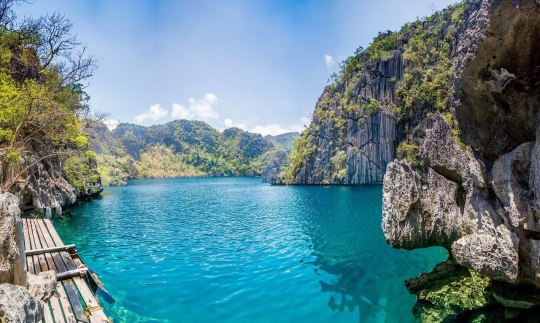
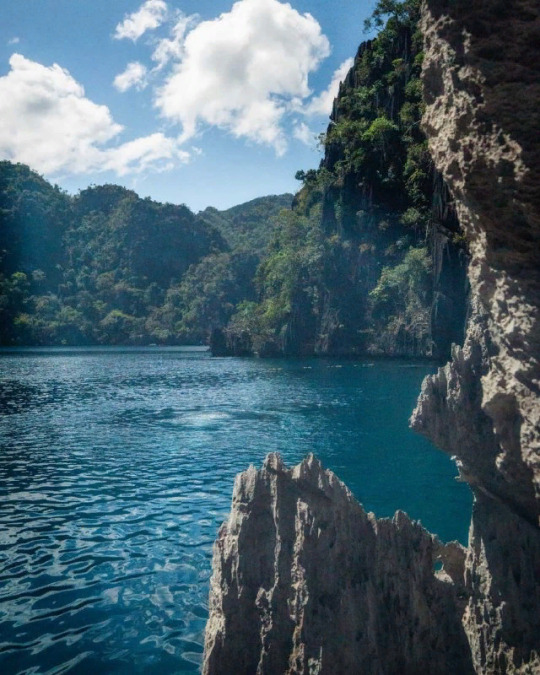
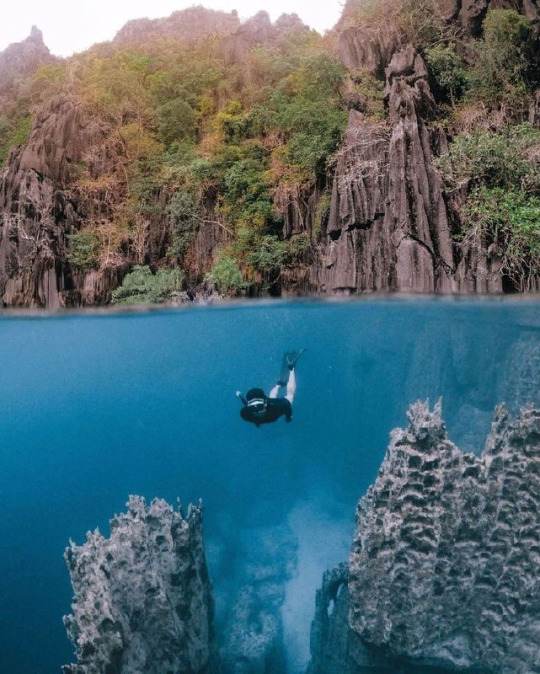
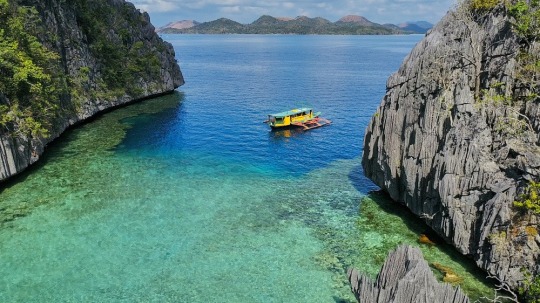

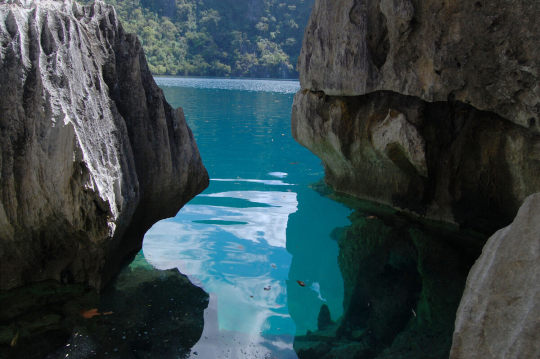
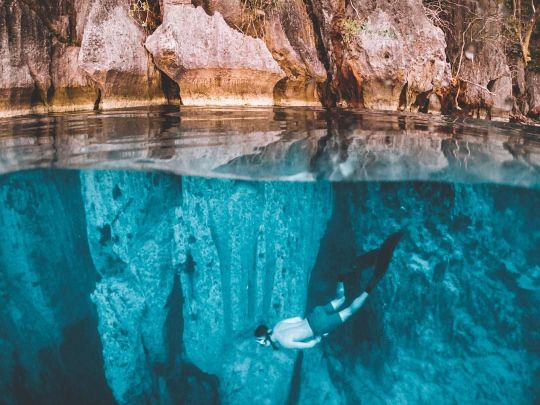
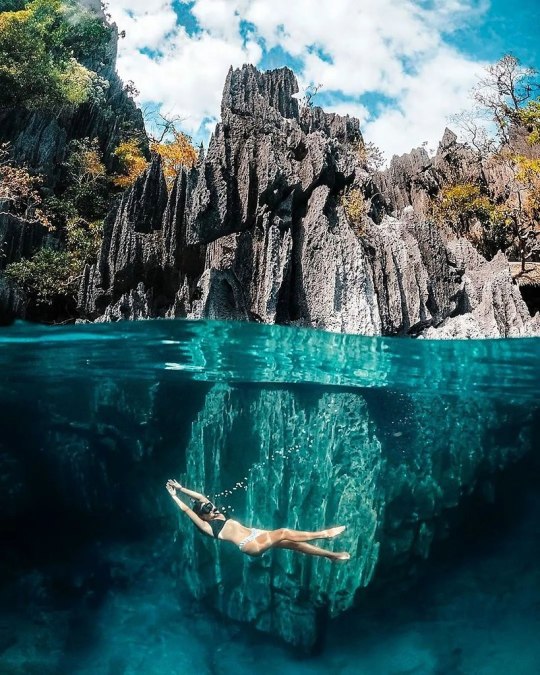
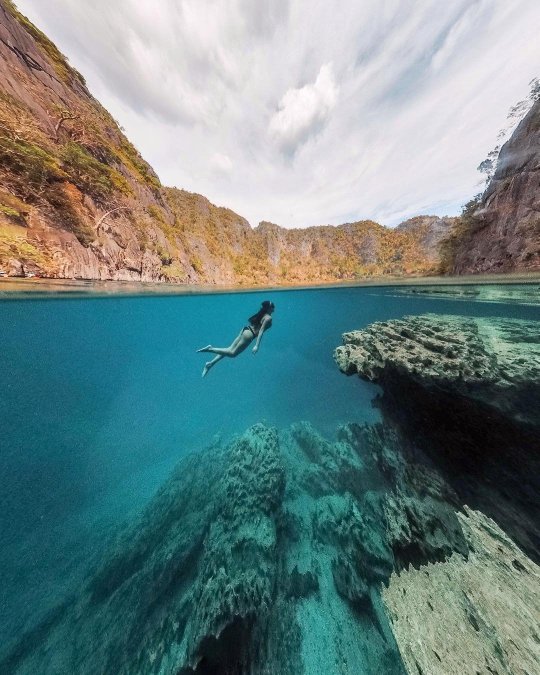
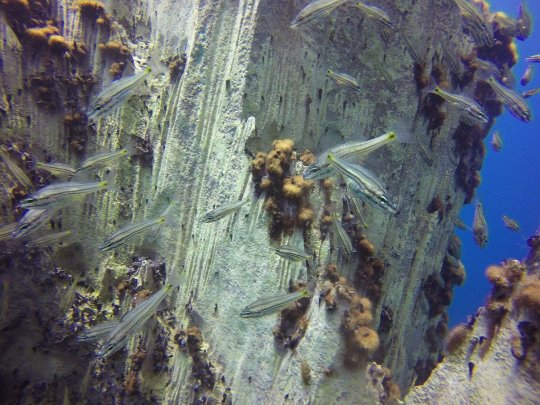
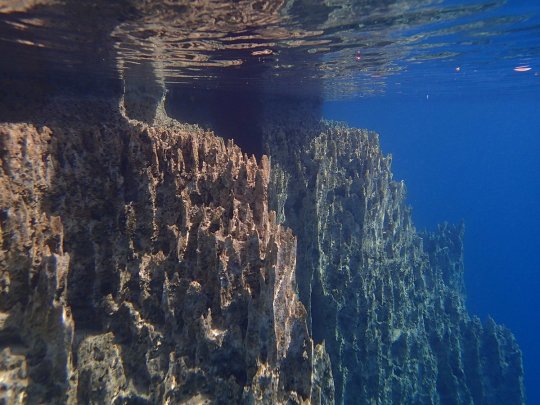
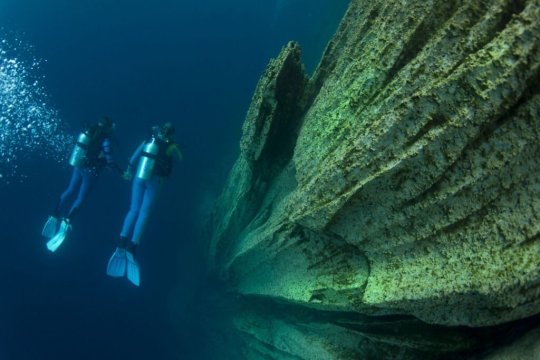
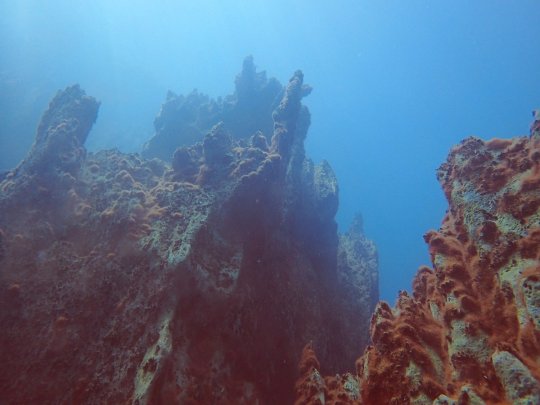
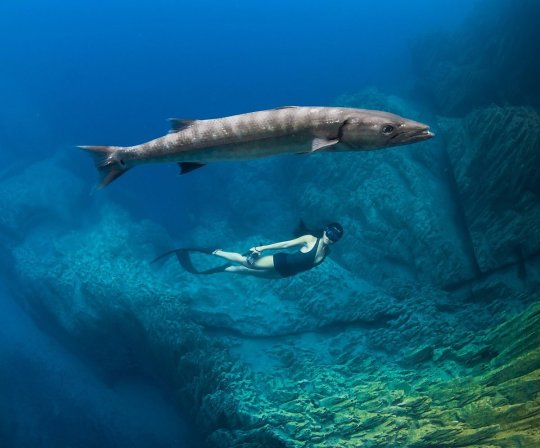
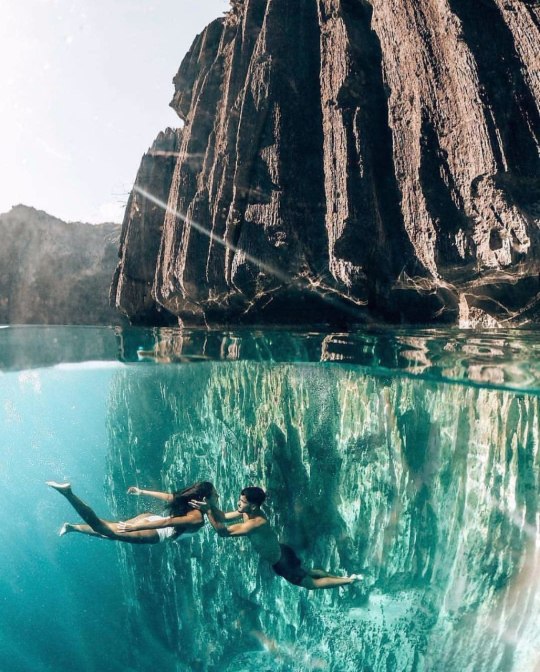
Филиппины , Озеро Барракуда. Philippines, Barracuda Lake.
Озеро Барракуда, расположенное в северной части острова Корон на Филиппинах, предлагает уникальные условия для дайвинга. В кристально-голубых водах озера (его ещё называют Лулуйюань), скрытых между величественными скалами, вы можете встретить реббит-фиш, сомов, пресноводных креветок, моллюсков, рифовых окуней ну и конечно ту самую 1,5-метровую барракуду, которая живет тут одна.
Еще в этом месте дайверам предлагается испытать термоклин и галоклин, уникальные явления, которые сложно найти где-то ещё в мире. На поверхности озера дайверов, пловцов и любителей подводного плавания ждёт температура воды около 28°C. Но когда опускаешься на глубину 13-15 м, температура резко меняется и становится почти 40°C .
Такое необычное повышение температуры связано с тем, что озеро содержит как солёную, так и пресную воду. Дайверы могут даже видеть тонкую, отчетливую границу, разделяющую два водоёма. Озеро также характеризуется впечатляющей коллекцией известняковых образований, которые поднимаются со всех сторон и простираются под поверхностью воды. На северной стене озера Барракуда есть пещера на глубине 33 метра. Она соединяет озеро с морем.
Ещё одной уникальной особенностью озера является песок на самом дне, который описывают как желеобразный, шелковистый, возду��ный и илистый.
Barracuda Lake, located in the northern part of Coron Island in the Philippines , offers unique diving conditions. In the crystal blue waters of the lake (also called Luluyuan), hidden between the majestic rocks, you can meet rabbit fish, catfish, freshwater shrimp, shellfish, reef snappers and of course that same 1.5-meter barracuda that lives here alone .
This place also invites divers to experience the thermocline and halocline, unique phenomena that are difficult to find anywhere else in the world. On the surface of the lake, divers, swimmers and snorkelers can expect a water temperature of about 28°C. But when you descend to a depth of 13-15 m, the temperature changes sharply and becomes almost 40°C.
This unusual increase in temperature is due to the fact that the lake contains both salt and fresh water. Divers can even see a thin, distinct line separating the two bodies of water. The lake is also characterized by an impressive collection of limestone formations that rise from all sides and extend below the surface of the water. On the northern wall of Lake Barracuda there is a cave at a depth of 33 meters. It connects the lake with the sea.
Another unique feature of the lake is the sand at the very bottom, which is described as jelly-like, silky, airy and silty.
Источник:t.me/+HLoqW4OcT5VjZjM6,/dzen.ru/a/Yoi_mPWnvXsTT2TX, /bangkokbook.ru/galereya/filippiny-ozero-barrakuda-94-foto.html, /account.travel/place/barracuda-lake.html, /account.travel/place/barracuda-lake.html, /dzen.ru/a/XXq1jB7jTwCshHXm,/www.tripadvisor.ru/Attraction_Review-g729733-d2061953-Reviews-Barracuda_Lake-Coron_Busuanga_Island_Palawan_Province_Mimaropa.html.
#Philippines#Coron Island#Barracuda Lake#nature#nature aesthetic#landscape photography#mountains#trees and forest#lake#travel#diving#underwater photo#Филиппины#Корон#Озеро Барракуда#природа#Пейзаж#озеро#горы#лес#небо#дайвинг#подводное фото#туризм#nature video#видео природы
147 notes
·
View notes
Text

Siren!RE4R!Leon drabbles


(Read while listening to this! Also, this is a re-upload because the first version of this drabble had some issues and I just had to fix those, particularly in similarities with other works.)
Siren!Leon who lures in sailors with his pretty face towards the rocks or stormy seas, ripping apart humans who fall for the superficial and relish in the fresh taste of their blood.
Siren!Leon who prefers being solitary, preying on ships alone. He doesn't need anyone by his side; it’s best to survive alone, with no liability hanging around him that could possibly complicate things. He likes it simple, and prefers it this way too.
Siren!Leon who spotted you from afar, walking on the shoreline with your skirt lifted. He observed you from behind a sunning rock, a storm-hued gaze intently studying your movements. He sees you waddle over to a rock near shore, sitting on it but letting your legs stay submerged. A pleased expression is on your face, your legs swinging in the warm seawater.
Siren!Leon who saw you frequent that rock, doing the same thing each time– same time, same rock, same duration on keeping your legs soaked in the water. He began bringing small fish and shellfish to the rocks with the hopes of grabbing your attention though every time, without fail, you always toss his bait back to the sea; you’re a lot more intelligent than he thought. It’s going to be a lot harder to make a meal out of you.
Siren!Leon who finds himself in the midst of a hunt in a bad storm, the waves tossing and turning him beneath angry waves. He managed to catch and eat his fill but the water violently thrashed him, the world turning upside-down and dark. He wakes up when he feels a tugging sensation on his tail, seeing you try to drag him back to the water by tail, grunting with effort. He looks at himself and spots how pale and green he’s gotten due to being exposed to the land for a long time.
Siren!Leon who is secretly thankful for your help because had you not tugged him back to the water, he’d be good as dry and dead. He must’ve hit his head or body while he was unconscious, his joints sore and a dull pain throbbing somewhere from behind his eye. He decides to stick to a diet of small fish and crustaceans for now, humans much too formidable for his injured state. When he’s back to full health, he begins bringing you more crabs and fish– his own way of saying thank you to you.
Siren!Leon who finally gets the courage to approach you, aware that his webbed fingers and long nails may look scary along with his sharpened teeth. He explains that he’s been the one bringing the fish and shells and that he’s seen you on that sunning rock many times. He puts off the idea of eating you, his conscience not letting him do that after you’ve just saved him. You explain to him that the reason you only douse your legs are because of a certain skin ailment, your doctors prescribing the medicinal properties of seawater for your condition.
Siren!Leon who suggests wrapping seaweed and kelp for your legs. Though the idea is funny, you let him do that though you have a bit of a distrust towards him. He wraps your legs delicately, making sure that the aquatic plant is on your skin comfortably. You let him do that each time you come to the rock, seeing significant improvements on the welts in your legs– it hurts and itches less now.
Siren!Leon who finds himself frowning when it’s time for you to go, hoping that the sun rises faster than the moon can sink so it’s another day for you to come back again. Soon, the thoughts of walking on land swim into his mind– how do humans live? What do you do there? What do you eat? A fuzzy feeling washes over his chest the more he thinks about you– it’s as if there’s a storm raging in his heart but he doesn’t feel very bad about it, just the opposite in fact. Now, he spends the night looking for pearls and pretty shells to give to you. You’ve also seemed to take a liking for shrimp, so he looks for those too. There was one time where you brought back a cooked version of the shrimps he gave you, letting him have a bite and it tastes totally different. It doesn’t suit his appetite but it suits yours and that is enough to satiate his cravings.
Siren!Leon whose feelings for you grow everyday, the urge to crawl on the shore and follow you to wherever you live clawing its way to the front of his mind. Being alone out in the great ocean without you is no longer the life Leon wants to have for himself; why had he deprived himself of company? Was it because fate made him wait for you to waltz into his life? Was this solitude him subconsciously reserving himself for you? He would do whatever it takes to be able to join you in land– learn how to write, count, eat food cooked, and keep his nails trimmed.
Siren!Leon who enjoys hearing you read aloud and describe how your day went in full detail. He discovered that he enjoys books, loving it the most when you read to him. He never really cared about words or readings, his past self would think that those were simply symbols plastered on a surface– nothing deeper than that. Here he is, begging you to read him one more chapter before you leave again because whenever you read the symbols plastered on refined tree bark, your voice has given them beauty and deeper meaning.
“I wish I could see the world you live in, even for just an evening,” You gently confess to him, curious about the world of turquoise beneath foamy waves.
“You have my eyes. I’ll tell you everything there is in here.” Leon reassures with a toothy smile, sharp teeth bared but it doesn’t scare you. Your soul is a constellation of the brightest stars, his eyes dedicated to be mesmerized for you and you only like he’s your astrologer.
Siren!Leon who spends the night gathering all the treasures, pearls, shells, stones, and kelp that he can. He crawls to the shore where land and water clash, praying that the tides don’t wash away the artwork he lays out for you. Of course, he doesn’t fail to adorn your rock with other pretty things. His mind works with two different things at the same time: the art he lays out and how to put his feelings into words.
Siren!Leon who waits for you eagerly, staying in shallow waters where anyone can see the glisten of his tail. All night he looked after every single rock and shell, making sure that not a single bit of his work was misplaced or moved by the tides, even in the daytime when the sun was branding the surface with its searing touch. After what seemed like forever, he finally sees you approaching the shoreline. He can’t hold back anymore: he crawls into the shore, hands clawing at the sand to drag himself to you.
“Leon, please get in the water.” You urge him with a shaky voice, placing your trembling hands on his shoulders.
“Why–”
“Please, just get in the water!”
He turns around and crawls back to the sea but he avoids the intricately laid out shells and stones as he makes his way back. He looks back at you but you stay behind on the shore, not even aware that the ground you’re in is a large mosaic of a sea turtle migration that Leon made.
“Y/N, what’s going on?” He worriedly asks.
You hear sounds from behind you: the loud grunts of men with their fishing lines, nets, and harpoons storming towards the coastline. You have no time, urging Leon farther from shallower waters.
“You need to hide,” you tell him. He stays there, staring at you with a puzzled expression. “Hurry! They’re coming this way!”
You urge him farther but he isn’t budging, coming nearer to you instead with pleading eyes.
“I’ll tell them that you swam off, okay?” Your voice grows increasingly shaky, an uncomfortable lump lodging in your throat. Leon swims closer, crawling nearer to the shore where people can easily see him.
“Don’t follow me,” you plead with him as tears begin to brim on your waterline, a delicate balance between holding on and setting him free. “Go away, you idiot! You’ll die if you come with me!”
Despite all your pleas with him, it falls on deaf ears as Leon still crawls closer to you, his heart shattering at how distressed you look; you didn't even notice what he worked on all night, you didn’t even raise your skirt above your ankles. With each advance Leon makes, you move back, moving further from the sea. Your tears are finally let loose, forming rivers of pain on your cheeks. Sobs wrack your body, your figure trembling from the emotions setting itself free from the confines of your aching heart. Leon can only watch and hope that his mere presence is enough to soothe you, unable to stand and wipe those tears from your face.
“Go!” He inches closer. “Piss off! I hate you!” He inches closer again, placing a comforting hand against your foot but you move further away, a jolt of disbelief settling unpleasantly in his system. “Get your dirty hands away from me! Just leave me, you goddamn fool!”
Now you’re screaming, hoping that the wind would drown out your pained cries. You’re sobbing loudly, tears spilling like endless rain. Leon is still inching closer towards shore, desperation gnawing at him despite his silence.
“Don’t you follow me!” You shriek. He stops moving forward and just gazes up at you with a pleading gaze, his eyes heavy with the weight of tears yet to fall.
“Don’t go.” He softly begs, tenderly wrapping webbed limbs around your ankle as casts his head down. You cry even harder now, your soul unravelling like embroidery with each wail. A tear of Leon’s cascades down his cheek, saltier than his turquoise home. You move further and retreat inland, freeing yourself from his gentle hand but he crawls after you.
“Go away! I’m going away now!” You scream, picking up a pebble and throwing it towards his direction. The pebble hits his cheek, the crimson a contrast against his pale skin.
“I’m sorry! Just… don’t follow me!”
He doesn’t follow you anymore, watching you run back towards the land without sparing a single look to the poor siren who you’ve enchanted with the song of your kind heart.
Siren!Leon who risks getting caught by hunters on the shore by waiting for you, fixing the rocks and shells on the coastline so it’ll be pretty when you come back.


NOTE - As I said earlier, this is a re-upload of the same drabble I posted last night but there's changes in terms of lines and content because one of the parts I added was a little too similar to another author's drabbles and I didn't mean to do that so ofc I took the post down to fix it and apologized to the author so there's that. The Siren!Leon concept was inspired by @bumblebeesfromvenus drabble so go check it out coz it's so good!!! Anyways, that's it and tysm for reading my drabble!!!!!! I <33333 UUUUUUU
#leon kennedy#resident evil#leon kennedy x y/n#fluff#leon kennedy x reader#leon scott kennedy#leon kennedy fluff#leon s kennedy#leon s kennedy fluff#biohazard#resident evil 4#resident evil x reader#resident evil 4 remake#re4make#re4 remake#re4r#angst#light angst#resident evil angst
232 notes
·
View notes
Text
🫧Species Transition Plans🫧
Seen a lot of posts recently related to beings' transition plans so I feel like it'd be nice to talk about my own!
Physical:
Tattoos (chromatophores on my shoulders/back and a sleeve of different species of squid).
Keeping my buzzcut and consistently having it dyed bright colours/patterns. (Kinda resembles the mantles of some squid.)
Fake fangs (I did have a set however they were poorly made and fell apart, I plan to make new ones eventually).
Ear pointing (resembles squid fins/inkling ears)
Add more tentacle/squid related accessories into my outfits (will likely make my own).
Top surgery (My gender and nonhumanity are heavily linked, top surgery would be beneficial for alleviating both species/gender dysphoria).
Start Testosterone (same as above).
Social / Lifestyle:
Spend more time near the sea, hopefully join a volunteer group for ocean surveying. (I would LOVE to live near the sea but it's unfortunately not very realistic for me at the moment).
Learn how to scuba dive.
Learn how to forage along the coast + potentially learn how to fish.
Incorporate more seafood into my diet (I already eat fish often, however I think I could eat more varieties of seafood, especially shellfish).
#🎣treble talks#🎣critter time#nonhuman#nonhumanity#therian#therianthropy#species transition#transspecies#otherkin
24 notes
·
View notes
Note
Some academic tomfoolery: newbie marine biologist Grian is trying to study some FASCINATING odd seal behaviour. this species of seals are using and making tools and doing more obvious vocal mimicry than usual along with lots of complex seal noises! incredible! Seal stone age and plausibly language! Though it's mostly more...bone age...lots of chewed-into-shape bones. He should probably get an anthropologist in on this but this is like, one of his first projects, he'd have to actually publish this first.
There's even a particularly tool-smart one who seems to be poking around at a fresh shipwreck and keeps coming up on Grian's boat? Grian's wished them luck with whatever they're trying to do with the destroyed boat (it had belonged to some rich guy and experienced bizarre problems at sea one day and wrecked some rocks where it absolutely shouldn't have been) but he's not risking going there That Boat. Sometimes bits of it moves. He thinks the seal is discovering redstone. They've definitely discovered fire and cooking, there's a deliberate campfire there some days and he's seen them with cooked seagull and fish.
also there is a Very Attractive Mechanic-In-Training, Mumbo, who's been working on his boat and seems to think Grian's research is funny without ever actually doubting any of it and has a very fancy and clearly custom-made dappled black and grey jacket that might actually be real pelt. He's going to the same university Grian's doing research with, finishing his degree in nautical engineering; he's getting so much extra credit fixing all the bizarre problems Grian's boat keeps getting. Some of them are Grian's fault, some of them are just things breaking because they're on a boat, and some of them are very smart seals investigating the boat and breaking it in new and bizarre ways.
Who even tries to shuck a boat? Idiot seal juveniles with bone-and-wood shellfish harvesting tools, apparently. At least, Mumbo is convinced it's an attempted boat-shucking, and not just stabbing the boat to see what'd happen or because they don't like it.
Mumbo and Grian hit it off, Mumbo seeming to have a crush at first sight - he's so flustered when Grian talks to him the first time!
Grian's been telling Mumbo all about his research, and Mumbo's been telling Grian all about his studies, and they've been getting along really well and even starting to cautiously flirt and go out to places together. Mumbo has tales about the mess half the fishing boats in the area are in, some people just don't maintain their boats right.
And then one day Grian spots the genius seal caught in a fishing net and, well, he dives down to save them. Just in time to see them try to save themself by turning into Mumbo the boat mechanic. Turns out selkies are real. At least the different shape means he's less stuck so they can free him easier.
And just to make it worse: Mumbo's the genius seal who's been on his boat in seal form before, multiple times, starting when Grian was just starting out his research and had no idea how smart these seals were. And messed with Grian's stuff. Grian had called him a "glorious chonker" and "beauty" and "smarter than a Grian" to his face. Which was his first meeting with Mumbo apparently. No wonder he'd been so flustered the first time he worked on Grian's boat! And several other times after!
(Though now he has a new research avenue: what's with the majority of selkies being unable to take human form? Sure, joining human society enough to study boats was apparently very difficult for Mumbo, but - it'd be a lot easier to make those tools if more than a few of them could have thumbs.)
longpost anon. have some selkie mumbo.
What's even worse - the worst thing ever, actually - is that Mumbo had to rescue Grian. From attempting to rescue Mumbo. Because Grian got caught in the net afterwards.
And now he never lets Grian live it down. He's even started his own "research" paper! On the Study of a Grian. Not only has Grian discovered selkies exist, but apparently they're able to bully him!
Jeez. And Mumbo has to be hot too. Selkies just get it all, huh?
#hermitshipping#ask#grian tag#mumbo tag#grumbo#longpost anon#mod 🎀#weekly theme: academic tomfoolery
99 notes
·
View notes